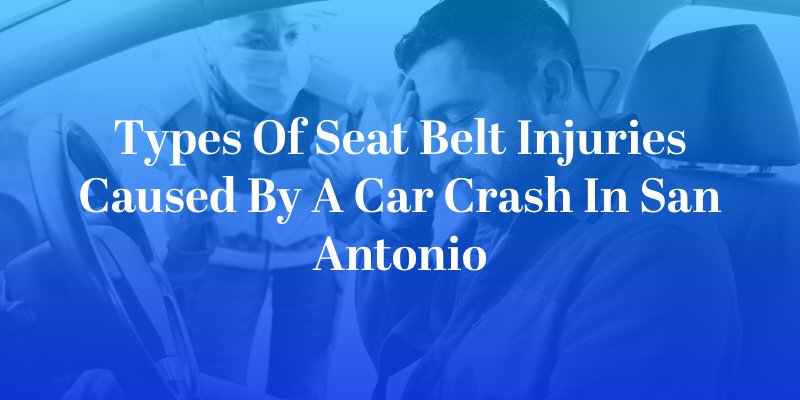 Seat belts have saved countless lives by reducing and preventing injuries in car accidents. It is always important to wear a seat belt while driving or riding in a motor vehicle. However, in some cases, it is the seat belt that causes an injury in a vehicle collision. In these situations, the victim can recover financial compensation for seat belt injuries in addition to any other injuries suffered.
Seat belts have saved countless lives by reducing and preventing injuries in car accidents. It is always important to wear a seat belt while driving or riding in a motor vehicle. However, in some cases, it is the seat belt that causes an injury in a vehicle collision. In these situations, the victim can recover financial compensation for seat belt injuries in addition to any other injuries suffered.
Soft-Tissue Injuries
The force of the seat belt against a victim’s body can cause soft-tissue damage in areas of contact, such as the chest, shoulders, abdomen, lap and hips. These injuries can include bruising, contusions and abrasions. This pattern of bruising is often referred to as “Seat Belt Syndrome.” In severe cases, the sudden stopping motion caused by the seat belt can cause muscle sprains and strains.
Bone Fractures
Seat belts work by diffusing the force of a motor vehicle collision across various points of the body that are protected by the skeleton, such as the chest and hips. However, in some cases, the forces caused by the restraint system can be enough to crack and fracture bones. Common seat-belt-related fractures include broken clavicles, sternums, ribs and vertebrae. These fractures can be painful and inconvenient at best and permanently disabling at worst.
Spinal Cord Injuries
The spinal cord can be severely injured by a seat belt in a major auto accident. The force of the impact between the body and the restraint could fracture one or more vertebrae in the spine. This can lead to pain, swelling, reduced mobility, nerve damage, numbness, tingling and even permanent paralysis, such as paraplegia or quadriplegia. While some spinal cord injuries are treatable, others are irreversible.
Neck Injuries
If worn improperly, a seat belt could exert force against the neck in a car accident. This could cause severe to catastrophic injuries, such as disk herniation, cervical fractures, nerve damage, deep lacerations and even death. Even if a seat belt is in the correct position, the force of the body flying forward and being abruptly stopped by the restraint could whip the head and neck around and inflict a soft-tissue injury such as whiplash.
Chest Injuries
The chest is a common area for seat belt injuries. If the force of a car accident throws a vehicle occupant into a seat belt at high speed, places where the belt connects with the chest can suffer bruises, fractures and other injuries. These injuries may affect the ribs, sternum or clavicle. In severe cases, a fractured clavicle could injure the heart.
Internal Injuries
If the lap belt was not worn in the proper position across the hips at the time of the accident, it could press into the lower abdomen and injure the internal organs, including the liver, kidney, pancreas and spleen. Pressure and force from a seat belt to the abdomen – which does not have any bones protecting it – could cause abdominal tears, organ damage, internal bleeding and organ failure.
Can You Recover Compensation for a Seat Belt Injury?
Seat belt injuries can range from minor to extremely severe. In rare cases, aortic injuries such as tears and ruptures can occur due to seat belts, potentially resulting in death. It is possible to recover financial compensation for a seat belt injury as part of a car insurance claim or personal injury lawsuit against an at-fault party in Texas. However, you may need help from a motor vehicle accident attorney in San Antonio to obtain a fair settlement from an insurance provider.
